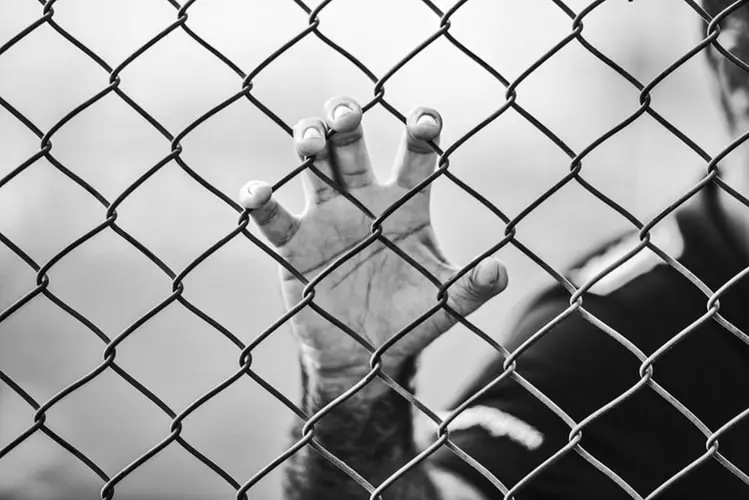Since the 1980s, homelessness in Canada has been a growing problem. According to the most recent statistics, it is estimated that approximately 35,000 Canadians experience homelessness on any given night and at least 235,000 Canadians are homeless in any given year.
In a study conducted in Toronto area jails, it was estimated that 1 in every 5 prisoners was homeless when incarcerated. Within days of discharge, it was projected that their rate of homelessness would increase by 40 percent. Because homeless persons are generally charged with non-violent offences, including property, drug, and/or theft offences, defence lawyers are an excellent resource to consult when attempting to develop a strong defence against these kinds of charges.
Contextualizing Homelessness
Homelessness has been defined as the absence of stable, permanent housing. This includes people who are absolutely homeless (living outdoors or in squats), sheltered homeless, and precariously housed persons (i.e. persons living in rooming houses, hostels, or whose housing is otherwise precarious). The latter is a form of hidden homelessness.
In terms of demographics, males are typically overrepresented amongst the homeless as are those people who are sexual minorities. In terms of race, Indigenous peoples and black Canadians are also overrepresented. These groups face the additional challenges of racial discrimination and/or homophobia.
Homeless persons’ involvement in the criminal justice system is not simply a product of their criminality. Inmates often end up experiencing homelessness soon-after being discharged from prison due to inadequate access to housing, employment, and health-based support.
At the same time, many people experiencing homelessness end up in prison due to a combination of mental health and substance use issues, reliance on crimes of survival, and higher police surveillance due to their visibility on the streets. As a result, many homeless people are trapped in a “revolving door” between prison and the streets.
Homelessness and the Criminal Justice System
In order to understand the relationship between homelessness, criminality, and incarceration, it is important to examine the different intersecting socioeconomic conditions that can lead to the incarceration of homeless persons and the homelessness of newly released offenders.
Housing
Access to housing is viewed as a fundamental first step to eradicating the incarceration of the homeless. Obtaining affordable housing is a challenge for many homeless persons. As a result, they may resort to seeking temporary shelter or sleeping in parks and other public places. In the latter case, they may face penalties or be charged with violating municipal bylaws, such as loitering, noise, and panhandling.
Newly released offenders also face significant challenges in obtaining and maintaining access to adequate housing. Individuals who are poor, who have a previous record of homelessness, and who have weak or nonexistent attachment to family and friends are at a particularly higher risk of becoming homeless once they are released from prison.
Moreover, being released from prison with inadequate housing supports and minimal income oftentimes forces people to live in unsafe neighbourhoods, where they are at risk of being victimized or being drawn back into criminal activities.
Employment
People who are homeless face incredible challenges in a competitive labour market and a lack of housing (i.e. no address to put on a resume) means they may have to compromise the ability to obtain and maintain gainful employment. Other factors, such as poor health and inadequate access to food, also impact their employability.
Because homeless people cannot access welfare or unemployment benefits, they must generate some kind of income in order to survive. More often than not, homeless persons engage in risky money-making strategies which are in some cases illegal or quasi-legal, including sex trade, panhandling, squeegeeing, and criminal acts such as theft and drug dealing.
Surveillance by Law Enforcement
Because homeless persons’ way of generating an income is often highly visible (e.g. panhandling, squeegeeing) and forces interactions between homeless people and the public, there has been a growing demand to suppress such activities.
One of the key policy responses has been to criminalize the homeless by changing laws that target the activities and behaviours of homeless people, ranging from the ability to sleep in parks and other public places, to placing limits on their means of survival.
In 2000, Ontario introduced the Safe Streets Act, which, while not explicitly mentioning homeless people, increased penalties for their key income-generating strategies, such as panhandling and squeegeeing.
These shifts in public policy have increased the surveillance of homeless people by the police. Police are routinely called by city residents and business owners to arrest or displace homeless in an effort to rid the city of urban disorder. As a result, these homeless people are often ticketed or charged with misdemeanour offences, such as trespassing, drinking in the public, and disturbing the public.
While these offences may not result in prison sentences, they can often lead to more serious criminal charges eventually cycling the homeless through the criminal justice system repeatedly.
Health, Mental Health, and Addictions
The homeless population is characterized by poor health, which is both a cause of and a product of being homeless. Additionally, they also suffer from concurrent disorders which describes the combination of having mental health problems with addictions.
Such health problems can disrupt a person’s ability to carry out daily life activities, such as maintaining interpersonal relationships, housing, and employment. In terms of the legal and justice implications, evidence suggests that many homeless people with mental health and addictions problems wind up in custody. In Canada, it has been long-recognized that this, in part, is attributable to the deinstitutionalization of psychiatric patients which began in the 1960s.
Offences Committed by Homeless People
Generally speaking, homeless persons are less likely to be charged with violent offences and more likely to be charged with property-related offences, such as those which meet their survival needs. As mentioned earlier, they are frequently charged with violations of municipal bylaws, such as loitering, noise disturbances, and panhandling.
This means that homeless persons are generally not considered a threat to public safety, so they should not be imprisoned. Imprisonment carries a whole host of problems that can turn non-violent offenders into hardened criminals and cycle them viciously through the criminal justice system.
Moreover, when released from prison, individuals can immediately become homeless again, followed by further criminal activity. The three main reasons for reoffending include addictions, coping with independent living after institutionalization, and fractured family relationships.
Homeless people may also occasionally reoffend in order to obtain shelter or temporary asylum, especially during the winter months as a way of escaping the cold.
Programs and Support
There is a bidirectional relationship between homelessness and incarceration; people who are homeless are more likely to end up in prison and the prison experience itself places the released person at risk of becoming homeless.
As a result, homeless individuals face a series of intersecting challenges related to a lack of housing, income, health problems, mental health problems, and substance use issues. In order to minimize the risks of homelessness among releases, efforts must be directed at identifying how a prisoner can be supported while in prison but also once they are released.
This will require implementing:
- A detailed discharge plan;
- In-prison support programs; and
- Post-release supports and community supervision
Overall, efforts should be made around destigmatizing and decriminalizing homelessness. In fact, there is no evidence that suggests that policies that criminalize the homeless have had the effect of moving them into the economic mainstream and out of homelessness. Instead, a collective effort should be made to help fund skills training programs to help the homeless find stable employment.








Leave a Reply
You must be logged in to post a comment.